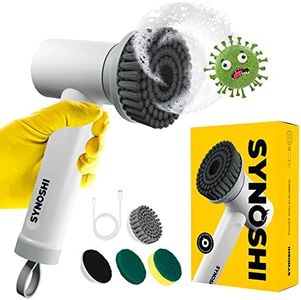We Use CookiesWe use cookies to enhance the security, performance,
functionality and for analytical and promotional activities. By continuing to browse this site you
are agreeing to our privacy policy
10 Best Power Scrubbers
From leading brands and best sellers available on the web.Buying Guide for the Best Power Scrubbers
When shopping for a power scrubber, it's important to think about what kinds of cleaning tasks you need it for, like kitchen counters, bathroom tiles, outdoor furniture, or even your car. A good power scrubber can save time and effort compared to traditional scrubbing by hand. You'll want to focus on the features that make cleaning fast, thorough, and comfortable. By considering the main specifications, you can select a model that fits your household tasks and makes cleaning less of a chore.Brush Type and AttachmentsBrush type refers to the shape, size, and firmness of the scrubbing head, and attachments are extra brushes or pads included with the power scrubber. This is important because different surfaces or stains require different brushes—for example, stiff brushes for grout and soft ones for delicate surfaces. Models often offer several attachments, such as flat brushes, corner brushes, or sponge pads. When choosing, consider what you'll be cleaning most often: more attachments mean more versatility, while simpler sets are easier to use for specific tasks.
Power Source (Battery vs. Corded)Power scrubbers can be battery-powered (rechargeable or using regular batteries) or plug-in (corded). Battery-powered models offer freedom of movement and are great for areas without easy access to plug sockets, but they need to be charged and may run out of power mid-job. Corded models usually have more consistent and powerful operation, but being tethered can be inconvenient. If you clean large or hard-to-reach areas, cordless may be easier, while corded works well for longer sessions or big messes in one spot.
Spin Speed (RPM)Spin speed, often measured in revolutions per minute (RPM), tells you how quickly the brush rotates. Higher RPM can mean faster and more effective scrubbing, especially for tough grime. Typical home scrubbers range from slow (below 200 RPM), moderate (200–400 RPM), to fast (over 400 RPM). For heavy-duty jobs, a higher RPM is helpful, but for delicate cleaning, lower speeds prevent surface damage. Your main cleaning need—intense scrubbing vs. gentle maintenance—should guide your ideal RPM.
Ergonomics and Handle DesignThe handle design affects how comfortable and easy the scrubber is to use, especially during longer cleaning sessions. Look for a handle that is long enough for your tasks and shaped for a good grip. Some models offer adjustable or extendable handles for reaching floors or ceilings. If you have limited strength or need to clean lots of vertical or overhead surfaces, focus on weight and handle comfort.
Water Resistance and Cleaning EnvironmentsSince many scrubbing tasks involve water, a power scrubber's resistance to water (sometimes marked as 'waterproof' or 'water-resistant') is essential for safe use and longer lifespan. This lets you use it safely in wet areas like showers, sinks, or outdoors. If most of your cleaning involves wet environments, make sure the model can handle splashes or even brief submersion.
Battery Life and Charging Time (For Cordless Models)For cordless scrubbers, battery life impacts how much cleaning you can do per charge, while charging time affects how quickly it’s ready to use again. Battery life often ranges from 20 minutes to over an hour, while charging can take 1–4 hours. If your main cleaning sessions are long or cover a lot of area, look for extra-long battery life, or models that support quick re-charging or have exchangeable batteries.
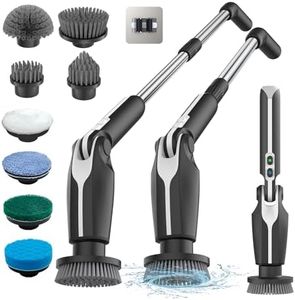
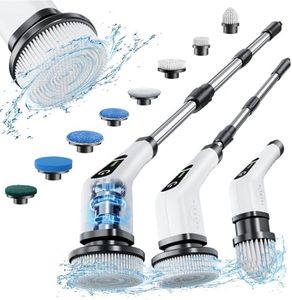
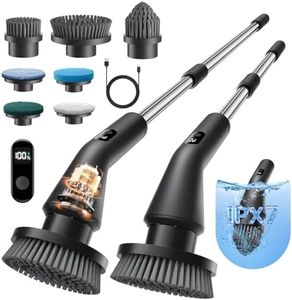
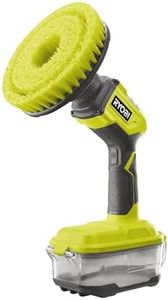

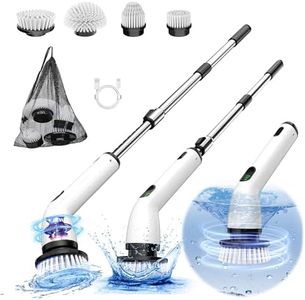
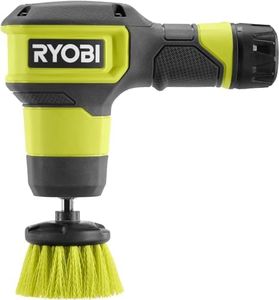

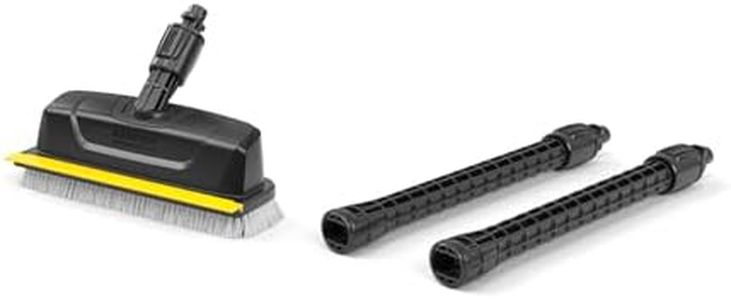
![Electric Spin Scrubber, [4 Adjustable Angles] [Battery Display ] Homtronics Cordless Power Scrubber with 8 Replaceable Brush Heads, 450RPM Electric Cleaning Brush for Bathroom, Floor, Tile, Car-Grey](https://images-proxy.bestreviews.guide/b19C11euzH8vTQxqEqDIeqpfM4M=/0x300/https://m.media-amazon.com/images/I/51R1fR54smL._AC_CX679_.jpg)

